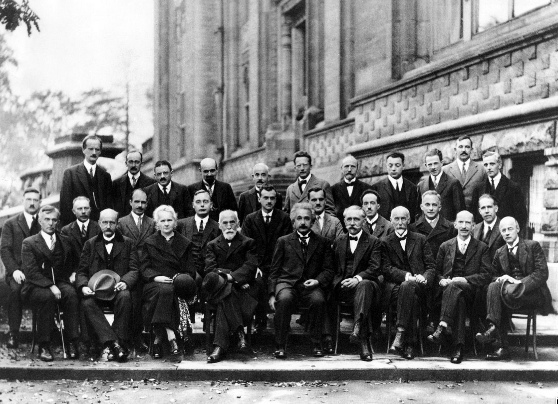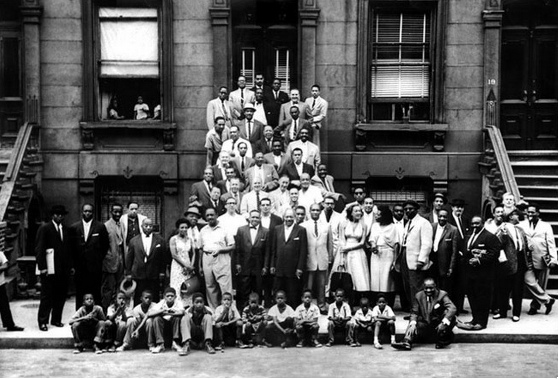Not just another incubator
Creating an incubator within many companies, today, is no more news than creating a marketing department is. In fact for our type of business, it is a given. So the launch of a financial services incubator at Anthemis, the Anthemis Foundry, isn’t news—the news is how we’re going to create companies and products.
Ecosystem fit and Venture Design
Most accelerators and incubators are about spotting or putting together an exceptional team with a great idea that addresses a large potential market. You need both of these, of course, but to solve the single biggest challenge of any startup, you need to solve the chicken & egg problem: How do you capture the potential market opportunity from what’s newly possible here and now?
This is what we call the ecosystem fit. Because Anthemis is all about ecosystems fitting together, it’s a natural approach for us. We’ll focus on three areas to build companies: the team, the eventual market opportunity, and the ecosystem fit – the starting point for the path to capture the opportunity. The ecosystem fit will be the variable that differentiates our focus, and design-based company creation, Venture Design, will be our differentiating process.
A previous ecosystem fit
Previously, I co-founded an incubator in San Francisco where I led the project that became Yelp. Having researched the space commonly referred to as ‘local’, which consisted of online classified services such as Craigslist, we realised that an online version of Yellow Pages was a larger potential market than Google’s then ad-revenue one, so Google would be forced to look at it. That was the market opportunity.
We then looked at the potential for an existing ecosystem fit, i.e., how existing organizations could possibly get from A to B to grab this opportunity. We realized that incumbents’ attempts at online versions of Yellow Pages would fail because they were not based on the new opportunities that were possible online (they did not even have search capability). Having written software to analyse Craigslist and then sifting through an entire month’s worth of local services classifieds, we realized that newer companies such as Craigslist also didn’t have the opportunity to get from A to B because their local services were riddled with covert ads for prostitution, so there was no way they could try to monetize it.
When we began to think how we might solve it, we looked at local review sites which were then nascent. It was clear that the area where Yellow Pages made most of its money (ads for doctors and dentists and plumbers) did not engage people the way that reviewing things like pizza parlours did. But if you built a big enough community of restaurant reviewers, you would eventually reach critical mass and get the ones for the dentists, too. The market opportunity was the reputation of all businesses, and the ecosystem fit was the pizza-joint reviews—the current opportunity that would get us there.
From market opportunity to people ecosystems
Human beings have a tendency to create god-like figures to hero worship. A celebrity culture makes things simple to understand and is a more romantic notion, i.e., the idea is that people like Mark Zuckerberg are unique. This idea is compelling, but provably false; Zuckerberg is extraordinary, but not unique. If you create an ecosystem with a particular opportunity, then a suitably talented person will find it.
This fallacy of unique people is demonstrable with two examples:
Example 1 – simultaneous invention: If true invention required unique ability, then the surprising number of examples of simultaneous invention would be statistically impossible. Evolution, the telephone, the equivalence of mass and energy, calculus and the vaccine for polio were all discovered separately by two people. The key word here is discovered. Inventions weren’t created out of nowhere but were new things spotted by suitably bright people building on the state of the knowledge ecosystem at that time and its history. The telephone couldn’t have been invented by anyone before electricity was discovered.
Example 2 – spooky connectedness: Multiple ‘unique’ people being in the same place at the same time is illustrated in 1927 when physicists attending the second Solvay Physics conference sat down for a group photograph.

The result was a definitive who’s who of 20th-century physics, including Erwin Schrodinger, Werner Heisenberg, Paul Dirac, Max Planck, Marie Curie, Albert Einstein and Neils Bohr. The revolution that replaced Newtonian physics was created by people who knew each other personally, thus forming part of an ecosystem. This could have been a coincidence, but it happened in other sectors, too:

In August 1958, Art Kane, a freelance photographer for Esquire, asked if some jazz musicians would turn up for an impromptu photograph in Harlem. Fifty-seven of the world’s most famous musicians came, from Art Blakey to Count Basie, Dizzy Gillespie, Charlie Mingus and Thelonius Monk, creating one of the most famous group photographs in history. They just happened to all be around at the same time. The reason is they all knew each other, jazz was an ecosystem.
Today there is an ecosystem of internet entrepreneurs, and most of them are in the San Francisco and wider Bay Area. Their connections are a complex mix of social and professional, with rarely more than one degree of separation between them. Caterina Fake, who founded Flickr with her former husband Stuart Butterfield, who founded Slack, used to date Evan Williams, who founded Twitter. These are seemingly accidental personal connections that predated their entrepreneurial success.
The above relationships involve many people, not just two, by multiplying the chance of a chance of a chance. They are even more statistically impossible than simultaneous invention until you view the world not in terms of unique people and special ecosystems, but in terms of special people and unique ecosystems.
Strategic importance of digital ecosystems
The digital ecosystem is important; very important. We are undergoing a change to society that is now proving to be as fundamental as the Industrial Revolution. It’s effects are permeating modern life and extending into politics as the social pact between those who own the means of production and the ‘workers’ is threatened by ‘algorithmic’ platforms where the means of production and the workforce (computers) are either one and the same (internet companies employ 300 times fewer people per dollar market cap than industrial ones) or where workers are no longer employed in the traditional sense (40% of Americans will be freelance by 2020).
Europe led the Industrial Revolution, and although it culminated in the US with the assembly line, Europe created its share of large industrial companies. Along with the American companies of Ford and General Motors, there were Italy’s Fiat, France’s Citroen, and Germany’s BMW and Mercedes. With the internet, however, this has not happened because internet platforms, like the internet itself, straddle borders. And so, in both America and Europe you have Google and Amazon as market leaders.
But the situation is particularly dire for Europe. Very large numbers start to sound the same in newspapers, but $1 billion is a lot less than $100 billion and few people have noticed how far behind Europe is. The combined value of the top three internet companies by continent is The Americas @ $0.75 trillion, Asia @ $0.5 trillion, Africa @ $50 billion, and Europe @ $25 billion. Europe is behind Africa technically, and although it has billion-dollar internet companies, it doesn’t have $100-billion ones, which would have emerged if the tech ecosystem had been globally competitive.
Potential for a fintech ecosystem
Anthemis has been at the centre of technology-led financial services revolution long before the term “fintech” existed, and its model, even its name, is predicated on the idea of connecting and stimulating an ecosystem of modern, digitally native, financial services. The opportunity exists for a sector-specific financial services internet ecosystem outside of the US to dominate, and Anthemis, with our base in London and global reach—is perfectly positioned for this ecosystem. This opportunity exists for three reasons: (1) money is a universal language that does not need a marketplace of 300+ million American English speakers to dominate; (2) London, more than New York, is at the hub of a truly global approach to finance; and (3) regulatory arbitrage opportunities, which have been seized with Silicon Valley style libertarian zeal when launching companies such as Uber, are trickier with finance.
Process to capitalise on ecosystem opportunities: Venture Design
So now is the time to capitalise on the potential opportunities that exist to deliberately create financial services companies from scratch, and now is the time to use our formal approach: Venture Design. This approach is the deliberate realization of opportunities by competent people rather than the passive search for unique entrepreneurs who have found them; it is manufacturing companies rather than spotting them. Venture Design is only possible because people are not unique, but ecosystems are, and because a design approach means you can create novel things on demand.
“Venture Design is only possible because people are not unique, but ecosystems are, and because a design approach means you can create novel things on demand”
Few people would say that architects can’t create works of art because they are creating building designs on demand, but the process of company incubation can seem cynical and factory-like because it is premeditated. However, creating companies in an incubator isn’t necessarily of lesser creative value or quality than companies created independently by entrepreneurs as long as there is a creative process.
Anyone can be creative some of the time but a creative professional, such as a designer, can do it on demand. The trick is that designers are not actually creating things from scratch; they are seeing newly emerging patterns of opportunity and novelty and capitalising on them, that is, they have deep knowledge of a particular topic (such as Anthemis has with digital financial services) to enable unique insights. When this creative process is extended to the act of creating new companies, rather than the sorts of things we normally associate with design such as products, graphics and buildings, the formal process of Venture Design can evolve and it can be repeated. In other words, you can design high-quality, innovative companies on demand.
Venture Design is what we will be doing at the Anthemis Foundry. Because Financial Services is an ecosystem where a market opportunity for digital disruption has been visible for some time, but where path to get there has only recently emerged, now is the time to do it.